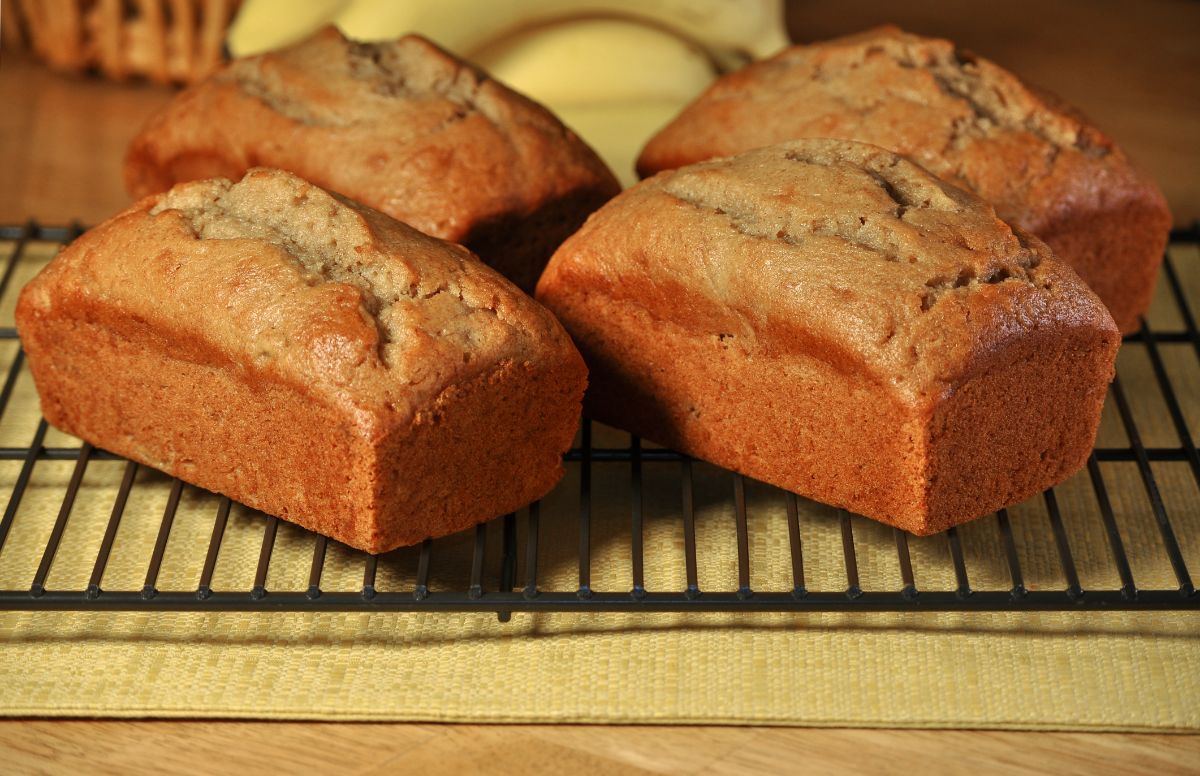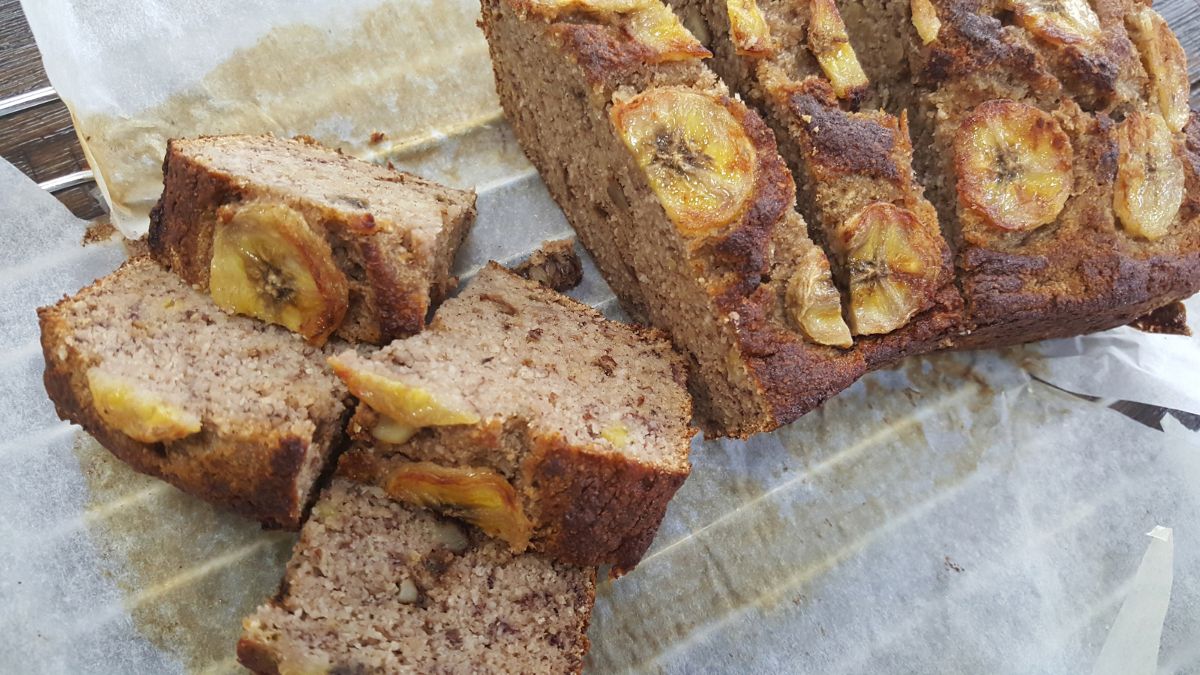Quick bread is leavened with baking soda/baking powder instead of yeast. As the name suggests, it’s easier to bake. The basic ingredients include flour, fat (margarine, butter, shortening, or oil), leavening agents, and eggs.
Beyond these basic constituents, you can add variations in texture and flavor. Generally, the type of bread produced will depend on the method of mixing and the ratio of liquid in the batter.

Basic Methods Used to Make Quick Breads
1. Creaming method
In this method, sugar and fat (margarine or butter) are “creamed” to entrain air into the mixture. After that, you should add spices, salt, and sugar into the mixture and beat them together.
Make sure the margarine and butter are warm. If you’re using an electric mixture, the friction from the mixing will increase the temperature.
Next, add eggs and any other liquid ingredients. Very often, inexperienced bakers add eggs too quickly resulting in curdling.
The egg white contains albumin while the yolk contains fats – the two allow the cells to expand without curdling. To eliminate curdling in mixes with high liquid, you should add a small portion of flour.
If you’re mixing manually, make sure you scrape the bottom of the bowl for about 4-6 minutes. Also, avoid mixing too much to prevent the gluten in the flour from developing into hard bread.
Finally, add dry ingredients including baking soda/baking powder, and beat them. The objective of the creaming method is to ensure the sharp sugar crystals create tiny voids of air mixture.
During the creaming process, the mixture becomes softer. Keep in mind the creaming time will depend on the temperature of the fat so 70 degrees Fahrenheit is the best.
If you use margarine or butter, they may not tolerate the friction as a result of constant mixing. Fat and sugar are creamed at medium speed to reduce the air cells formed during the early stages.
Unlike other baking methods, creaming is vital to the texture of the bread. If you omit any of the above steps, your baked goods could suffer. To be on the safe side, avoid mixing dry ingredients with wet ones. Gentle folding of the ingredients will protect the air sockets.
2. Stirring, Muffin, blending, or quick bread method
This is one of the most basic mixing methods in baking. It involves measuring dry and wet ingredients and then mixing the two. Wet ingredients include beaten eggs, which trap air to help the bread rise.
Other reasons why you should include eggs include leavening, flavor, and enhancing the color. The milk triggers the production of gluten, dissolves sugar, traps moisture, and allows leavening to start.

It’s also crucial that you add the right amount of fat to enhance flavor and improve tenderness. It’s worth mentioning that baking soda makes the bread to rise by releasing carbon dioxide.
The first step is to sift the dry ingredients. If you don’t have a sieve, you can place them together in a large bowl. Next, mix all the ingredients with a spatula. This prevents the eggs from being over-beaten. If you’re using a wooden spoon, give your mixture 15-20 strokes. Over mixing may cause elongated holes in the bread. The idea is to limit gluten production during the mixing process keeping quick bread tender.
Flour is made of proteins, so when it’s mixed with liquids (water or milk) it will produce gluten. The elastic substance holds air bubbles that expand from the leavening agent. During baking, gluten stretches like a net.
The muffin method is utilized in a variety of quick bread such as pancakes, waffles, blueberry muffins, and cornbread. But there’s a caveat to this method.
Never mix the dry and wet ingredients until you’re ready to bake. Just store them in a refrigerator and you’ll save time that busy morning.
And when it’s time to mix them, make sure the bowl is balanced. This will prevent the mixture from settling in the middle. Secondly, the fat must be in a liquid state. If you want to use shortening or butter, they must be melted.
Once the mixture is made, you should pour it into the bread pan. Ideally, the temperature should be lower to ensure heat penetrates the center of the mixture.
If you’re a baking enthusiast, you must have made a muffin in the past. When you take a bite, you must have realized there’re all sorts of air tunnels.
3. Shortening method
This method was used by early Americans and dates back to the 1900s. However, over the last few decades, this method has fallen out of favor because most food companies are formulating their products.
But first things first; what is shortening? This method uses fat to produce a tender baking product. Unlike other baking methods, shortening gives the bread a chewy structure.
The fats coat gluten strands preventing the formation of a tough matrix. While some people still prefer vegetable shortening, you should use butter because of its flavor. One tbsp. of shortening contains unsaturated fat, vitamin K, Trans fat, and calories.
However, there are a few substitutes. You can use one cup of shortening to one cup of olive oil. Other great substitutes include butter and margarine.
When you use butter as a substitute, you should bake for a short time but at a higher temperature. If you want to use vegetable shortening, you can store it in a pantry because it doesn’t require refrigeration. It’s also a great alternative for vegans.
When should you use the shortening method? Because plant and animal fats have a high melting point, you can easily incorporate them in the dough. You should use the method when making quick bread, cookies, and cakes.
Shortening cuts solid fat through the process of hydrogenation. It’s the addition of hydrogen atoms into fats. You should use a food processor or blender to mix fats and other dry ingredients.
As you perform the method, the flour proteins will become coated with shortening. Of course, the process gives rise to flakiness to produce quick bread.
Final thoughts
Quick bread is favored no matter the time of the day. Whether you like eating banana bread or muffins during breakfast, there’re plenty of pastries worth trying.
Depending on your preference there’re two main categories – those made with dough and those made with batters. Each of the above methods ensures the ingredients are dispersed well until you get the final product.
important to note the implements you use to mix (spoons, whisks, and blades) will make a big difference. You may want to try each of the methods and evaluate the one that gives the best results.
